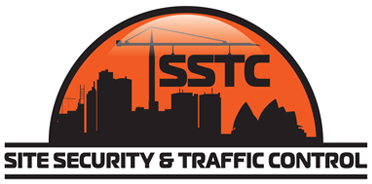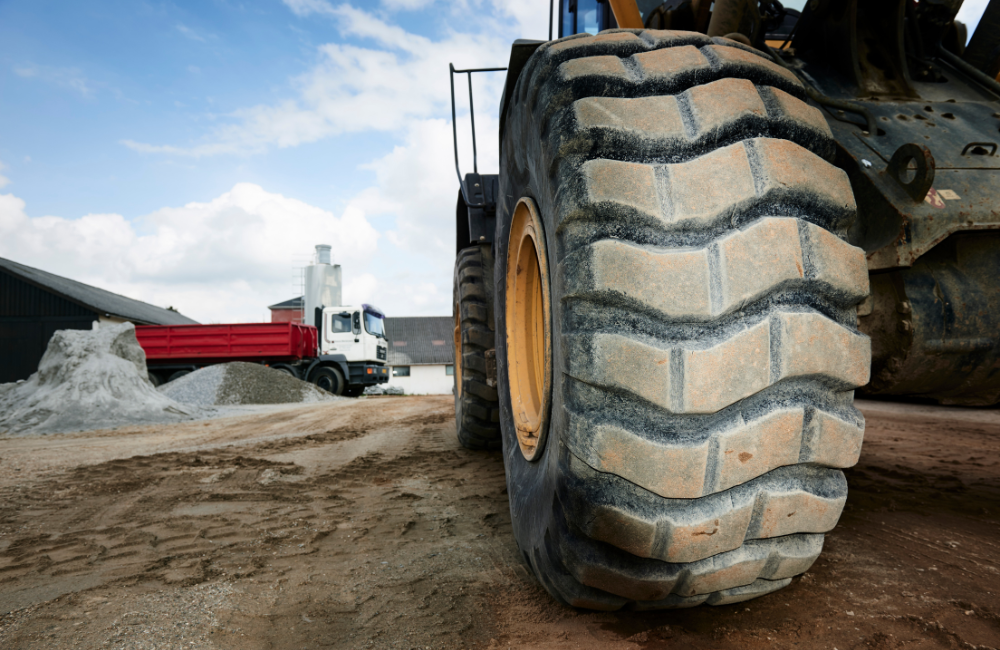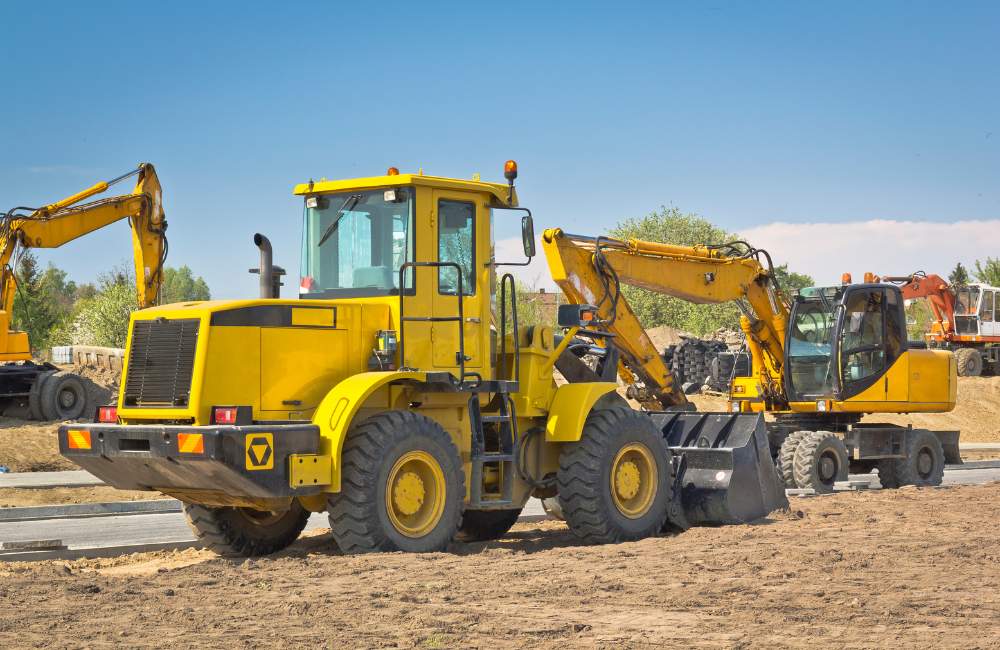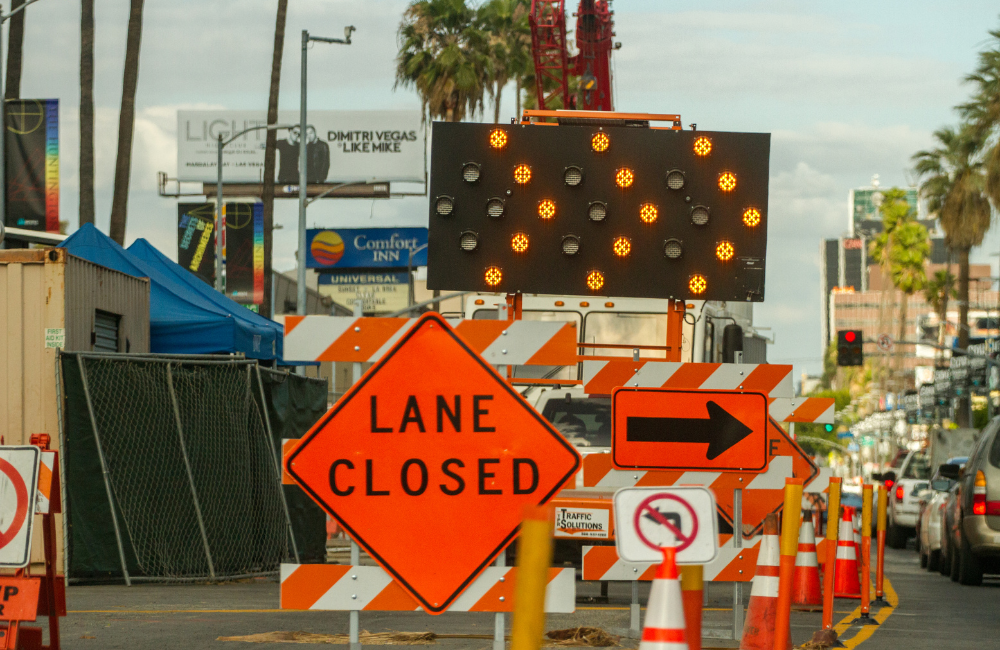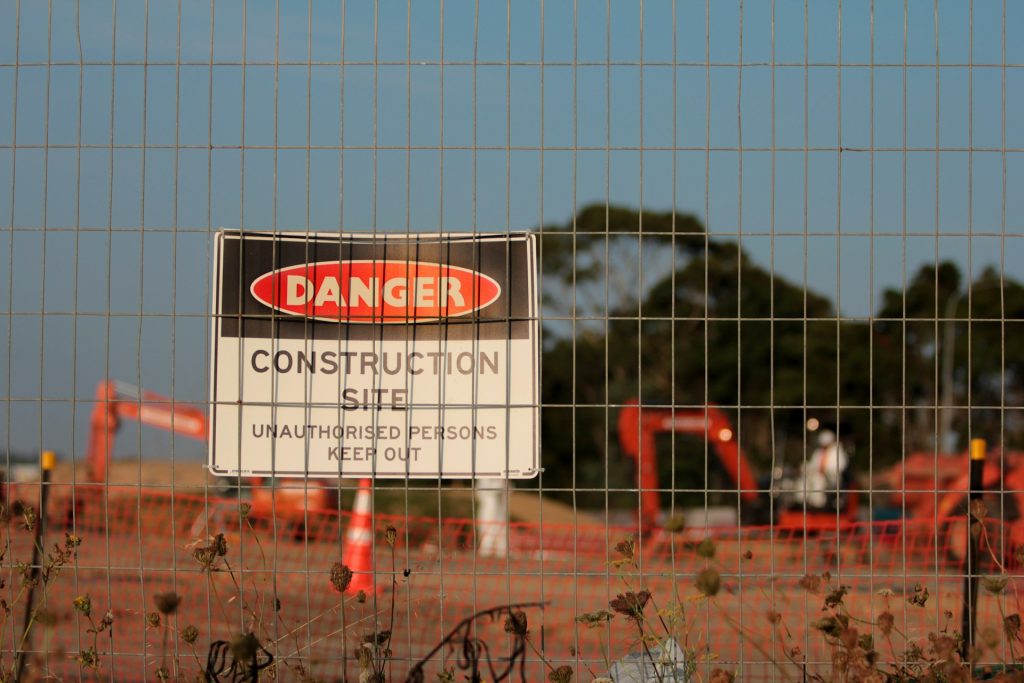Construction work is dangerous at the best of times, let alone when you add vehicles to the mix. Heavy machines share confined spaces, delivery trucks drop goods off, and traffic and pedestrians navigate disruptions to their regular routine. It’s a busy environment but it doesn’t have to be a chaotic one. A construction traffic management risk assessment helps to establish order and strengthen safety.
Construction sites tend to be fast-paced, intense environments where situations and demands come at you quickly. Sadly, sometimes hazards do as well. Falls from heights are the most common cause of construction industry fatalities, while slips and trips, asbestos, electricity and excessive noise run health and safety risks of their own. As far as traffic management is concerned, moving plants and vehicles such as trucks, Utes and forklifts create risks for workers while loading, unloading or reversing. Traffic risks on a construction site include vehicles colliding with one another, workers being trapped between vehicles and structures and items falling off vehicles, all of which can lead to serious injuries and deaths.
A construction traffic management risk assessment includes creating a construction traffic management plan (CTMP) to suit your business needs. A CTMP outlines the measures and procedures you need to manage the traffic around your construction site.
As a person conducting a business or undertaking (PCBU), it’s your duty to keep your workers safe, and that includes identifying traffic hazards as much as possible. Protect your staff and ensure you fulfil all legal obligations by applying the SSTC touch.
Traffic Risks Associated With Construction Sites
Construction sites pose numerous risks, and adding traffic to the equation makes many of them worse while also adding new hazards. Here are some of the most notable traffic risks on construction sites:
Material deliveries
Safety is a priority on construction sites even before the first mound of earth is shovelled out of the ground. Transporting the materials to the construction site is a concern in itself as it involves handling heavy materials like concrete, steel and lumber. Even when the project is underway, delivery trucks still come and go from the worksite, posing risks to pedestrians and staff members.
Large plant vehicles
Mobile plant equipment like forklifts, excavators, rollers, and cranes are common on construction sites, but they can be dangerous. The risks of large plant vehicles include contact and collisions with workers, collisions with other vehicles and objects, and the risk of vehicles overturning.
Public traffic
Construction works that take place on or near public roads disrupt the regular flow of pedestrians and traffic. Without the right traffic safety measures in place, you run the risk of drivers colliding with workers, pedestrians or each other.
Worker movement
Workers moving around the site are at risk of being struck by vehicles, mobile plants and even unsecured loads.
Pedestrian hazards
Without adequate traffic control and signage, pedestrians passing by your construction site are also at risk of moving vehicles or falling objects.
Blind spots
When operating vehicles or machinery around construction sites, it’s important to account for blind spots—those gaps in your peripheral vision where hazards can hide.
Lack of training
A team that lacks adequate training or knowledge of safety protocols is a recipe for disaster in high-risk environments like construction sites.
Inadequate signage
Along with sufficient lighting and properly marked traffic lanes, sufficient signage is a must-have safety feature on any construction site. Visible, easy-to-read signs make it easier for both workers and pedestrians to avoid common construction risks.
Minimising Traffic Risks In and Around Construction Sites
A multifacet approach is the best way to address traffic risks on construction sites. Some measures you can take to reduce the risk of accidents around your construction site include:
Place warning signs at all entrances
When it comes to safety, visibility is key. You can alert both workers and pedestrians of dangers by placing warning signs at entranceways, pedestrian routes and other pivotal locations. Brightly coloured, easy-to-read warning signs make accessing and navigating the construction area easier and safer for everyone.
Use traffic control devices
Traffic control devices direct the flow of traffic and help prevent accidents. Traffic cones and barricades are a familiar sight around construction sites, and traffic lights, road markings, and stop/slow signs are other commonly used examples.
Hire traffic control officers
Traffic control officers are trained professionals who can keep traffic flowing smoothly around construction sites, even in a bustling city like Sydney. They work closely alongside you to ensure traffic flow is managed safely and road closures and detours are in place.
Ensure adequate safety training
Every worker on your site needs a proper induction (and, in many cases, ongoing training) to ensure they continually adhere to safety rules and regulations. Your induction needs to be site-specific and cover the safety risks, safety rules, safe working protocol, and emergency contact information. Drivers, visitors, and other personnel who aren’t onsite every day may need their own safety instructions when they come to your site.
Have a construction traffic management plan in place
Before you can lay down the law when it comes to safety protocol, you need a construction traffic management risk assessment that includes a CTMP. And chances are, that’s not the only form of documentation you need.
The Plans and Permits Required To Minimise Traffic Risks on Construction Sites
When you’re laying down the groundwork for traffic safety on your construction site, here are some plans and permits you need to get:
Construction traffic management plan (CTMP)
A CTMP lays out clear traffic management processes to reduce the risk of traffic accidents in and around your construction site. A document that’s tailored to the needs of your specific project, it includes traffic routing, detour plans and safety measures for pedestrians, cyclists and motorbike riders.
Traffic control plan (TCP)
Essential for monitoring traffic flow around your construction site, TCPs are detailed plans that include the kind of traffic management staff, procedures and equipment you need.
Road occupancy licence
A road occupancy licence is required for any activity that’s likely to impact traffic flow, even if it takes place off-road. To acquire one, you need to specify the length and the conditions of your road occupancy.
Work zone traffic management plan (WZTMP)
If your project establishes work zones on the footpath or road, a WZTMP may also be required.
Development Application (DA)
Depending on the size and scale of your construction project, you may also have to submit a Development Application to the City of Sydney.
If that all seems too complicated—or at the very least, you’d rather not swim through a sea of paperwork—SSTC knows all the right procedures and protocols to mitigate traffic risks on your construction site.
Effective Construction Traffic Management with SSTC
Plans and permits are crucial to the safety of your workers and the public. But if navigating them is making your head spin, SSTC can help. With our detailed, reliable, cost-effective plans and permits, including construction traffic management plans, we leave no stone unturned when it comes to securing the safety of your construction site. We take the stress out of applying for permits with organisations like Council, RMS, STA, Police, Airport and TMC, acquiring the permits and permissions you need so that you can get on with your work.
The SSTC team has 25+ years of combined experience and a disciplined approach to safety that incorporates teamwork, integrity and effective communication. We’ll strengthen the safety of your construction site so that your risks of accidents and your impact on traffic are minimal, and we’ll ensure you have the policies in place for a clear run during your project.
Get in touch with us for a free quote and keep traffic under control at your construction site with SSTC.
